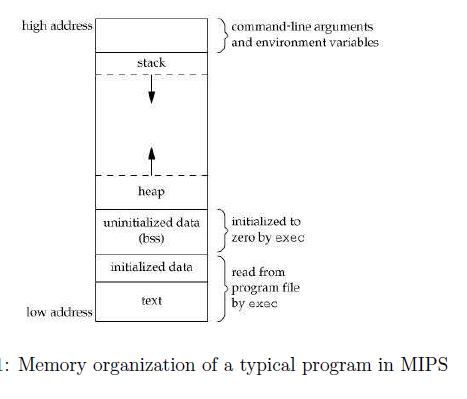
Code segment or text segment: Code segment contains the code executable or code binary.
• Data segment: Data segment is sub divided into two parts
– Initialized data segment: All the global, static and constant data are stored in the data segment.
– Uninitialized data segment: All the uninitialized data are stored in BSS.
Heap: When program allocate memory at runtime using calloc and malloc function, then memory gets
allocated in heap. when some more memory need to be allocated using calloc and malloc function,
heap grows upward as shown in above diagram.
• Stack: Stack is used to store your local variables and is used for passing arguments to the functions
along with the return address of the instruction which is to be executed after the function call is over.
When a new stack frame needs to be added (as a result of a newly called function), the stack grows
downward.